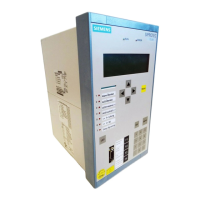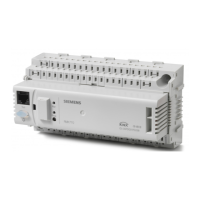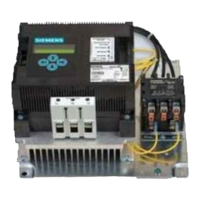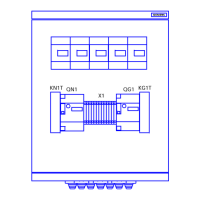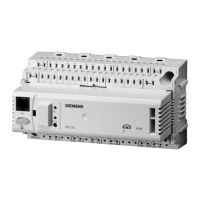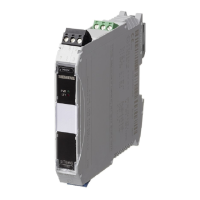7SR224 Argus Description of Operation
System Split condition is detected when either the measured phase difference angle exceeds the pre-set 25 Slip
Angle value or if the slip frequency exceeds a pre-set 25 Split Slip rate based on the selection of 25 System Split
Mode.
Note : the system split setting is effectively an absolute value and therefore a split will occur at the value
regardless of the direction of the frequency slip e.g. if an angle of 170° is selected, then starting from 0°, a split
will occur at +170° or -170° (effectively +190°).
If a system split occurs during an autoreclose Check Sync operation, with 25 System Sync set to Enabled, the
following events occur:
A System Split event is recorded.
The split flag can be mapped to an output relay for alarm indication.
The system split LED will stay on for a minimum time, or can be latched using non self reset LEDs.
If the 25 DAR Split Mode is set to CS, Check Sync will continue
If the 25 DAR Split Mode setting has been set to SS, the System Sync function is started.
If the 25 DAR Split Mode has been set to LOCKOUT, then, a system split LED indication is given. The relay will
stay in this lockout mode until one of the following methods of resetting it is performed
1. The relay is reset from Lockout by binary input or a command.
2. The CB is manually closed
4.3.7 System Sync Reversion
If the close conditions of System Sync are not met and a zero slip condition is subsequently detected, by the slip
falling below the 25 Split Slip setting, the relay will exit from System Sync mode and revert to Check
Synchronising mode. The reversion allows the device to use the wider Check Sync parameters, to allow a close
following the restoration of normal operation when the islanded network has been reconnected to the main
network by successful reclosure of a parallel connection.
4.3.8 System Synchronising Mode
For the relay to issue a System Sync Close the following conditions have to be met :
Both the Bus and Line voltages must be considered Live by the Voltage Monitoring elements.
25 System Sync Angle – the phase difference between the line and bus voltages has to be less than the phase
angle setting value and the phase angle has to be decreasing before the element will issue a valid close signal.
25 System Sync Slip, [if Enabled] – the frequency difference between line and bus has to be less than the slip
frequency setting value. Slip frequency must be above the 25 Split Slip setting to avoid reversion to Check
Synchronising conditions. The settings for 25 System Sync Slip and 25 Split Slip must differ by at least 20mHz.
25 System Sync Timer, [if Enabled] – the phase angle and voltage blocking features have to be within their
parameters for the length of the slip timer setting. If either the phase angle or the voltage elements fall outside of
their limits the slip timer is reset. If they subsequently come back in then the slip timer has to time out before an
output is given. (This ensures that a close output will not be given if there is a transient disturbance on the
system due to e.g. some remote switching operations).
25 Line Undervolts, [if Enabled] – the line voltage has to be above the line under-voltage setting value and also
above 5V for an output to be given.
25 Bus Undervolts, [if Enabled] – the bus voltage has to be above the line under-voltage setting value and also
above 5V for an output to be given.
25 Volt Differential, [if Enabled] – the difference between the line and bus voltages has to be less than the V
detector setting value for an output to be given.
The System Synchronising operation of the relay will only be started after a System Split is detected as described
in section 4.3.6 during an autoreclose or manual close sequence.
©2010 Siemens Protection Devices Limited Chapter 1 Page 50 of 70
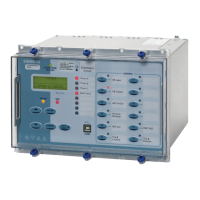
